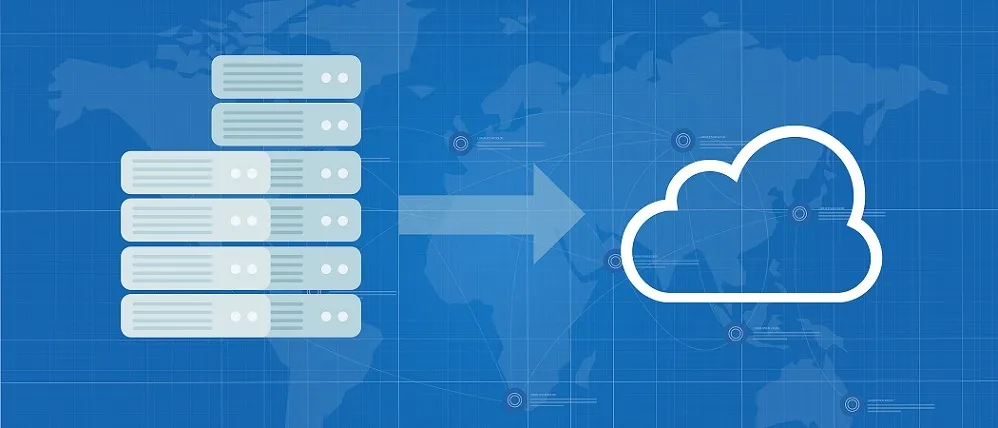Datacenter Migration: Why And How To Migrate To The Cloud
Datacenter Migration: Why And How To Migrate To The Cloud
The world of technology is constantly changing, and companies often need to adapt in order to stay competitive. Data centers are no exception - many organizations are now migrating away from traditional data centers towards cloud-based solutions. But why migrate to the cloud? And how do you do it? In this article, we'll explore the answers to these questions and more; delving into the details of datacenter migration and how it can benefit your organization.
Data center migration is becoming increasingly popular, as companies look for ways to reduce costs and increase efficiency. The advantages of moving to a cloud-based infrastructure are numerous: increased scalability, improved security, better collaboration between teams, and much more. Not only that, but with advancements in technology continuing to drive down the cost of cloud computing, now is a great time for organizations to make the switch.
But transitioning from a traditional data center to the cloud isn't easy - there are many challenges that must be addressed along the way. From selecting which applications will be migrated first, to ensuring all data is securely transferred across systems - there's a lot of work involved! In this article we'll explore why migrating your data center can give you an edge over your competition, as well as provide practical advice on how to get started. So if you're looking for an efficient and cost-effective way to
upgrade your IT infrastructure then read on!
What Is Datacenter Migration?
Datacenter migration is the process of transitioning applications, data, and other IT resources from an on-premises datacenter to a cloud platform. This can be done for several reasons, such as cost savings, increased scalability, and improved efficiency. It’s become increasingly popular in recent years due to the emergence of cloud technology and its ability to provide users with more flexibility.
When deciding whether or not to migrate to the cloud, businesses should consider their goals and what they hope to achieve through this move. There are many advantages that come with migrating your datacenter to the cloud, such as improved security and reliability. Cloud platforms are also able to offer better scalability than on-premises datacenters by allowing users to easily adjust their storage and processing capacity as needed.
The process of migrating a datacenter usually involves a few key steps. First, businesses must decide which applications they want to migrate, then review any existing infrastructure that needs to be updated or replaced before moving it into the cloud. After that’s done, businesses can then test their applications in the new environment before finally launching them in production. With proper planning and preparation, businesses can make sure the transition is successful without experiencing any disruption in service or security issues.
Migrating from an on-premises datacenter to a cloud platform can bring many benefits for businesses looking for greater scalability and cost savings. Although there are some challenges involved with this type of migration, careful planning and preparation can help ensure a successful transition without compromising security or service quality.
Benefits Of Migrating To The Cloud
Migrating to the cloud offers numerous benefits to businesses. One of the main benefits is cost savings. By migrating your data center services to the cloud, you no longer have to pay for expensive hardware and software investments up front. Instead, you can pay for only what you use and scale up or down as needed. This allows companies to save money by avoiding costly maintenance and upgrades that are typically required with traditional data centers.
Another advantage of moving to the cloud is improved scalability. With traditional IT infrastructure, it can be difficult and time-consuming to scale up or down if there's an unexpected spike in demand for resources. But with cloud-based solutions, businesses can easily adjust their computing power in real time without having to invest in additional hardware or software. This makes it much easier for companies to respond quickly and efficiently to changing needs and demands.
Lastly, migrating your data center services to the cloud also provides improved security. Cloud service providers employ sophisticated authentication protocols that help protect sensitive information from cyberattacks and other malicious activities. Additionally, cloud-based solutions offer built-in backups that make recovering data simple should anything go wrong. All these features combined make transitioning your data center services onto the cloud a safe and secure way of doing business.
Challenges Of Migrating To The Cloud
Migrating to the cloud can be an attractive prospect, with many potential benefits. However, there are some potential challenges to consider before making the move.
For starters, it's important to have a clear understanding of your needs and expectations. Without this information, you may end up investing time and money into a solution that doesn't fit your requirements. Additionally, you'll need to ensure that your existing infrastructure is compatible with the cloud environment you choose. This means that any customizations you've made in the past may require reworking or updating in order for them to work properly.
Another challenge is the cost of migration. You'll need to invest in both hardware and software upgrades as well as account for any additional services needed for a successful transition. If you're migrating from an on-premises system, there will also be costs associated with disassembling and reconfiguring your old setup in order to facilitate the move.
Security is another concern when considering a move to the cloud. While cloud providers generally offer high levels of security, it's important to make sure all data is encrypted during transmission and storage so that it remains secure at all times. You'll also need to consider how user authentication will work within your new environment so that your data remains safe from unauthorized access.
When evaluating whether or not migrating to the cloud makes sense for your organization, it's important to weigh these potential challenges against the potential benefits of making such a move.
Pre-Migration Preparation
Pre-migration preparation is a crucial step when migrating to the cloud. It's important to ensure that your organization has enough time and resources to make the move successfully. This includes establishing goals, assessing IT infrastructure, and creating an action plan.
The first element of pre-migration planning is setting objectives for the migration. What workloads will be moved? What level of security or scalability is needed? Establishing these goals upfront can help guide decision-making throughout the process.
Next, it's necessary to assess your existing IT infrastructure and determine which applications are suitable for cloud migration. During this stage, you should identify any potential compatibility issues with existing systems that may need to be addressed prior to moving data over to the cloud. Additionally, it's important to develop an action plan that outlines each step of the migration process and includes timelines for each task.
Once these steps are complete, you'll be ready to begin migrating your data and applications to the cloud. With a comprehensive pre-migration plan in place, you can reduce the risk of any unexpected delays or problems during the transition.
Cloud Migration Tools
When it comes to cloud migration, the right tools are essential. Different tools will be required depending on the individual needs and requirements of each organization. It’s important to understand which tools can help simplify the process and make the transition easier.
There are many different cloud migration tools available for businesses looking to move their data center operations to the cloud. These include cloud migration platforms such as Cloud Migration Accelerator (CMA), which helps automate most of the process. Other options include Amazon Web Services (AWS) Migration Hub, which simplifies data transfers from on-premise systems into AWS, or Microsoft Azure Migrate, which helps simplify migrations from on-premises or existing infrastructure into Microsoft Azure.
Businesses may also want to consider other services offered by cloud providers like Google Cloud Platform (GCP) and IBM Cloud Migration Solutions. These services offer comprehensive solutions that provide complete control over the entire migration process, including implementation services and support throughout the entire life cycle of the project. Additionally, some companies offer custom migration solutions tailored specifically for a company's specific needs, allowing for maximum efficiency during their transition period.
No matter what type of cloud migration tool is chosen, a successful transition depends on having a well-thought-out plan in place prior to beginning any work. This includes understanding all of the potential risks associated with migrating data and applications to a new platform, as well as determining what resources are necessary in order to ensure everything goes smoothly and securely during the move. With careful consideration and planning, organizations can ensure they have chosen a solution that meets their needs while still providing them with an efficient way to move their data center operations into the cloud.
Cloud Migration Strategies
Migrating to the cloud can be a daunting task, but with the right strategies in place, it can be relatively simple. In this sixth section of our exploration of datacenter migration, we’ll take a look at some cloud migration strategies that organizations should consider when making the transition to the cloud.
One strategy is to start small and then scale up as needed. Organizations should think about which workloads are best suited for the cloud and prioritize those first. This allows them to gain experience in migrating workloads to the cloud, as well as better understand what potential issues they may encounter when migrating more complex applications or data. It also allows organizations to better understand their usage patterns so they can plan ahead for future growth.
Another important strategy is to decide on a hybrid approach or go all-in on the cloud. Hybrid solutions allow organizations to maintain existing infrastructure while taking advantage of new cloud capabilities. This is especially helpful for organizations that may have complex legacy systems or are hesitant to move too quickly into the public cloud space. All-in approaches offer more flexibility and scalability while potentially reducing costs over time, so it’s important for organizations to weigh their options and select an approach that meets their needs best.
Organizations should also consider engaging third-party vendors for migrations, as they often have access to specialized tools and expertise that can help streamline the process. Additionally, engaging a vendor can help ensure that best practices are followed during migration and minimize downtime during transitions from one platform to another.
Security Considerations
Security is a critical consideration when migrating to the cloud. Any time confidential data, proprietary information, or financial records are involved, organizations need to be sure that the cloud environment they're utilizing is secure and compliant. It's important to understand exactly how the cloud provider handles security protocols and what measures they've put in place to protect data.
Organizations must also consider the physical security of their cloud environment. Data centers should have robust physical security measures such as firewalls, intrusion detection systems, and authentication processes. These measures will help prevent unauthorized access and any potential risk from malicious attacks. Additionally, organizations should ensure that their own internal networks are secure before making the move to the cloud.
Finally, organizations must understand their rights when it comes to data privacy and legal compliance. It's important for them to know what type of data can be stored in the cloud and what type of access other users may have to this data. Organizations should also consider any comply laws or policies that might apply when using a cloud service provider. By understanding these security considerations ahead of time, companies can ensure a successful transition to the cloud without compromising their data or putting themselves at risk.
Post-Migration Maintenance
Once a datacenter migration to the cloud is complete, it's important to make sure that maintenance is performed regularly. This helps ensure that the cloud environment remains secure and reliable. To ensure effective post-migration maintenance, there are a few steps organizations should take.
First, organizations should monitor their cloud environment for security vulnerabilities and patch any updates as soon as they become available. This will help prevent hackers from compromising the system and gaining access to sensitive data. Organizations should also regularly review their security policies and procedures to make sure they're up-to-date with current best practices.
Organizations should continually evaluate their cloud architecture to identify potential areas of improvement or optimization. This can include testing out new tools and services or utilizing strategies like auto-scaling or multi-cloud deployments. By doing this, organizations can improve performance and efficiency while minimizing downtime and costs in the long run.
Lastly, organizations need to stay on top of changes in the cloud computing landscape. They need to be aware of new trends and technologies so they can take advantage of them when necessary or adjust accordingly if something doesn't work out as expected. Additionally, staying informed about industry news can give an organization valuable insights into how other companies are managing their own cloud environments successfully.
By taking these steps after a datacenter migration, organizations can maximize the value of their investment in the cloud while increasing security and reliability over time.
Measuring Migration Success
Measuring migration success is key to understanding whether a datacenter migration was successful. Companies need to be able to evaluate the results of the transition from their on-premise system to the cloud in order to ensure they made the correct decision. In order to do this, they need to have established metrics and criteria beforehand, so that they can accurately measure how well their new cloud solution works for them.
The first step in measuring migration success is to track performance metrics such as cost savings, efficiency and scalability. Companies need to assess how much money they are saving by migrating their data centers, and if those savings are worth it compared to the cost of maintaining an on-premise system. Additionally, companies should look at how efficient their new cloud solution is in terms of storage space, computing power and overall performance. Finally, scalability is important for businesses who plan on expanding in the future – measuring how quickly new services can be added and deployed is essential for determining successful migration.
Another important part of measuring success post-migration is making sure all security measures are met. Security checks should take place during the process of transitioning data centers as well as after it’s complete; testing out different security protocols and processes can help identify any potential weaknesses that may have been overlooked during the transition period. Additionally, looking at user feedback is another way of assessing migration success; customers’ experiences using your cloud-based services can provide valuable insight into how successfully your company has migrated its data center operations.
Taking all these factors into account will allow businesses to determine whether or not their datacenter migration was a success. With properly tracked performance metrics, tested security protocols and customer feedback, companies can make informed decisions about their ongoing cloud usage going forward.
Cost Analysis Of Migrating To The Cloud
When it comes to datacenter migration to the cloud, cost analysis is key. It's important to understand that while the move is not free, there are many long-term cost savings associated with cloud computing. In this section, we'll take a look at some of the costs associated with migrating to the cloud as well as how they can be managed and minimized.
First of all, one has to consider the upfront costs associated with migrating to the cloud. These include such things as licenses, hardware and software upgrades, employee training and more. Depending on the size of your organization, these costs can add up quickly. However, these costs should be seen as investments in future success rather than expenses. Once migrated, organizations often experience cost savings from reduced IT infrastructure maintenance and staffing costs as well as from improved efficiencies gained from leveraging advanced cloud capabilities like auto-scaling and serverless computing.
In addition to upfront costs for migration itself, organizations must also consider ongoing fees related to their cloud environment such as compute fees or storage fees. To minimize these ongoing fees it's important to ensure you are using an optimal mix of services that best meets your needs, and that you are taking advantage of any discounts or tiered pricing models offered by your chosen vendor(s). Additionally, one should monitor usage patterns regularly so that resources can be adjusted accordingly in order to reduce waste or unnecessary spending over time.
Overall, understanding the cost implications of a datacenter migration is essential before making any decisions about whether or not it makes sense for your organization. While there may be some upfront investment required for a successful migration in terms of time and money, careful consideration put into cost management prior to and during migration will pay off in the long run – both in terms of budgeting and performance gains made possible by leveraging advanced cloud capabilities available today.
Frequently Asked Questions
How Long Does A Typical Datacenter Migration Take?
Migrating a datacenter to the cloud is an important process for many organizations, as it can provide improved scalability, cost savings, and flexibility. But before you embark on such a migration journey, it's essential to understand how long it might take.
Generally speaking, the timeline of a typical datacenter migration depends on several factors. How large is the existing infrastructure? What kinds of applications and services are being migrated? Are there any dependencies that need to be taken into account? Answering these questions can help organizations get a better sense of how long their particular migration process will take.
As with most IT projects, the more complex and larger the existing infrastructure is, the longer it'll take to migrate it. For example, if you're migrating an entire data center with hundreds of servers and applications running on them, it may sometimes even require months or years before everything is fully up and running in the cloud. On the other hand, if you're only migrating one or two small applications or services with minimal dependencies between them, then it could potentially be done in a matter of days or weeks.
The bottom line is that when it comes to datacenter migrations, organizations need to plan ahead by taking into account all the necessary factors that may affect the timeline of the project. This will enable them to ensure they don't run into any unexpected delays or roadblocks during their migration journey.
What Is The Most Cost-Effective Cloud Migration Strategy?
Migrating from a traditional data center to the cloud can be a challenging process. It is important for businesses to find the most cost-effective migration strategy in order to maximize their return on investment. In this article, we'll explore what the most cost-effective cloud migration strategy looks like and how it can help businesses save money.
When considering a cloud migration, there are several factors that need to be taken into account. First, businesses should consider the resources available in their current data center and decide what needs to be moved to the cloud and what can remain on-site. This will help determine the size of the transition and any additional costs associated with it. Additionally, businesses should assess their existing security requirements and determine if they need additional safeguards in place when making the transition to the cloud.
The next step in creating a cost-effective cloud migration strategy is identifying which services are best suited for migrating to the cloud. Different services have different pricing structures and levels of scalability, so it's important for businesses to do their research before deciding which ones they will use. Additionally, businesses should look into various providers and compare their prices, features, and scalability options before selecting one that best meets their needs.
By doing thorough research on available resources, security protocols, service plans, and providers beforehand, businesses can create an effective cost-saving cloud migration strategy that puts them in good stead for future growth. By taking these steps prior to migrating from a traditional data center to the cloud, companies can ensure that they don't end up overspending or sacrificing services that could improve efficiency down the line.
Are There Any Specific Security Protocols That Need To Be Followed During Migration?
When undergoing a datacenter migration, it's essential to consider the security protocols that need to be followed. This is especially true when migrating to the cloud, as the implications of a data breach can be far more serious. Adhering to certain security measures can help ensure the migration process is as safe and successful as possible.
The specific security protocols depend on the type of cloud hosting service being used. Generally speaking, best practices for cloud security include using strong authentication methods, encrypting data in transit and at rest, regularly monitoring activity logs and patching systems, implementing access control policies, and utilizing third-party software or services for added protection.
It's also important to have a contingency plan in place in case of any unanticipated issues during the migration process. Having a detailed plan that covers potential risks and how they should be addressed will help minimize disruption and ensure that no sensitive data is lost or compromised.
With careful planning and implementation of appropriate security protocols, organizations can make sure their migration experience is smooth and secure.
How Can I Evaluate The Success Of A Cloud Migration?
Migrating to the cloud is an exciting way to improve business operations. It can provide many benefits including cost savings, increased efficiency, and improved scalability. But how can we evaluate the success of such a migration? When it comes to evaluating successful cloud migrations, there are a few key criteria that should be taken into account.
First, you should consider whether the migration was completed within the estimated timeframe and budget. This will help you determine if your migration was efficient and cost-effective. Additionally, you'll want to assess if any issues or problems were encountered during the process and how they were addressed.
Another important measure of success is user satisfaction. Was the transition from on-premises systems to cloud services smooth and seamless? Did users have any difficulties with utilizing new tools or applications? Gauging user feedback is a great way to determine if your cloud migration was successful in meeting their needs and expectations.
To ensure a successful cloud migration, it's important to assess all of these criteria and take corrective actions as needed. With thorough planning and effective execution, organizations can reap the full rewards of their cloud investment.
What Kind Of Maintenance Is Required After Migrating To The Cloud?
Migrating to the cloud is an effective way to maximize the efficiency and performance of your business's IT infrastructure. But once you've made the leap, what kind of maintenance is required?
The short answer is that it depends. Cloud management involves a lot of factors that can vary from vendor to vendor and even from service to service. You'll need to assess your cloud environment regularly, which means keeping up with security patches and bug fixes in addition to monitoring usage and costs. The good news is that many cloud providers offer automated tools for managing these tasks, so you don't have to take on the entire burden yourself.
In addition, you'll want to ensure that your data is backed up frequently and securely. This includes making regular backups of user data, setting up alert notifications for outages or other issues, and testing recovery plans periodically. And if you're using multiple cloud providers, you may need additional tools to help manage access control across all platforms.
Finally, it's important to stay informed about new features or services offered by your cloud provider(s). This will allow you to take advantage of any changes or updates they make as quickly as possible so that your cloud migration remains successful over time.
Migrating To The Cloud Safely: Made Simple By Blusonic
Migrating to the cloud is a process that requires careful planning and execution. With proper preparation, it can be a cost-effective and successful move that streamlines business operations. It’s important to understand the timeline of the migration and take into account any specific security protocols that need to be followed. Additionally, evaluating the success of the migration is essential, as well as ensuring maintenance requirements are met after completion.
Once you’ve done your research and know what needs to be done, it’s time to make the move. I recommend working with an experienced service provider who can help guide you through the process step by step. They should be able to answer questions about costs, timelines, security protocols, and more so you can make sure your datacenter migration goes smoothly.
By taking the time to plan out your cloud migration strategy in advance and working with a service provider who understands your needs, you can ensure a successful transition from one datacenter to another or from on-premise infrastructure to cloud services. With an effective strategy in place, you can reduce costs while boosting efficiency and productivity within your organization.
Let Us Help You!
Sign up to our newsletter












